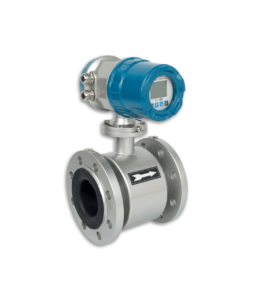Points to Watch When Buying
(a) When comparing quotations, look at specifications and/or guaranteed
accuracies as well as prices. For example, square-wave excitation costs more
than ordinary alternating current input, but gives better performance; it is
a waste of money to pay for that extra performance if it is not really needed.
(b) Make sure that the meter you buy is suitable for the whole range of duty
you have in mind for it.
(c) Is a built-in electrode-cleaning device needed?
(d) How has the meter been calibrated? The expression“dry calibration” is a
trade term meaning that the meter has not been calibrated at all, in the usual
sense of the word; it describes the process of measuring the field strength and
deducing the expected relationship between output and flowrate. For
accurate results a proper calibration on a water test circuit is essential; this is
known in the industry as a ‘wet calibration’. The smaller sizes can be flow-
calibrated over their whole working range, but calibrating very large meters
presents a difficulty. They are often calibrated only over the bottom of their
range, with the upper part of the calibration curve being extrapolated; this is
a great deal cheaper but obviously less satisfactory than full-range calibration,
which should be employed whenever it is economically possible.
(e)If the meter is to be installed below ground level in a pit, for instance-
make sure that the design is one that will withstand”drowning”.
Points to Watch When Using
(a) Never take an electromagnetic meter which was bough for one kind of duty and employ it on some other duty without first checking that it is suitable-because there is some other duty without first checking that it is suitable-because there is a good chance that it will not be.
(b) Never install a meter with the electrodes at the ends of a vertical diameter,
because the one at the top of the pipe would be affected by the occasional
air bubble passing by.
(c) Follow exactly the manufacturer’s instructions for connecting up the
meter. If you fail to do this, electrical interference may cause the meter to
give false readings.
(d) Check the zero of the meter occasionally when the flow is shut off. This
is not so essential with modern designs as it used to be, but is still a sensible
precaution to take with all meters.
(e) Make sure that the meter always runs full.
(f) If the meter is installed in a pipe where an electro galvanic corrosion
prevention system is in use, then electrical bonding straps must be used to
bypass the currents around the meter.

